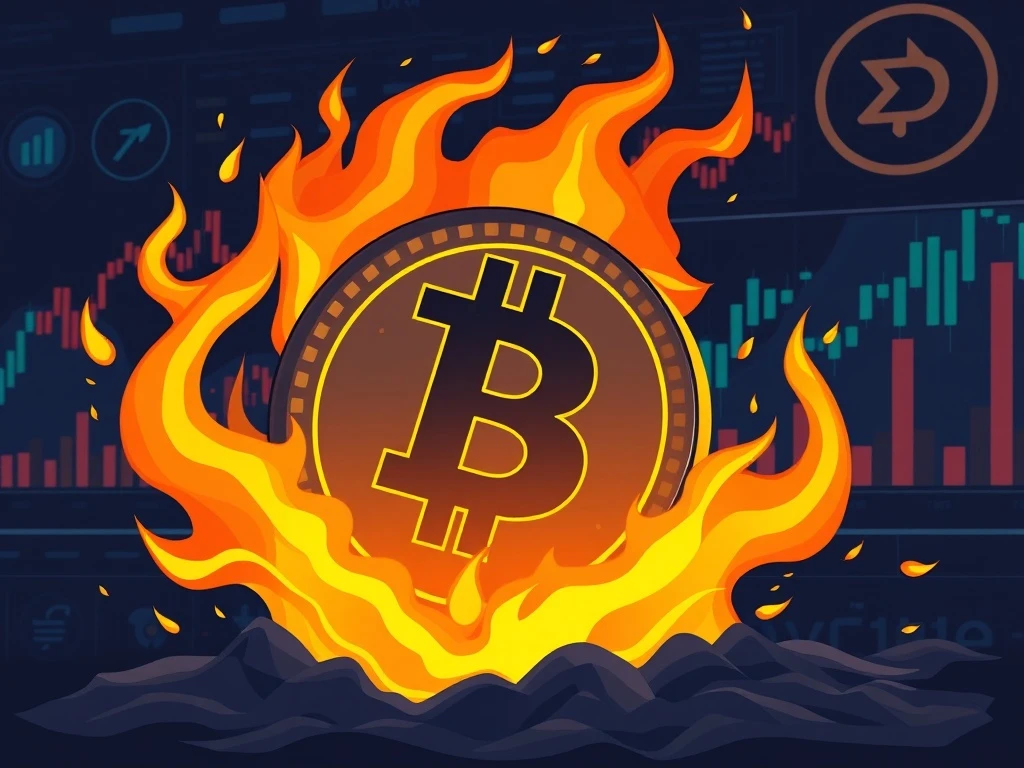WLFI’s Strategic Token Burn: Trump-Linked DeFi Project Destroys $1.43M in Tokens After Bold Buyback

Cryptocurrency enthusiasts closely watch market developments. Recently, World Liberty Financial (WLFI), a project linked to former US President Donald Trump, made a significant move. The project completed a substantial WLFI token burn, permanently removing millions of tokens from circulation. This action followed a considerable DeFi buyback, totaling over $1 million. Such strategic initiatives often aim to influence token supply and demand dynamics. Investors are now assessing the potential long-term impact on WLFI’s ecosystem and its market valuation.
WLFI Token Burn Ignites Market Interest
World Liberty Financial (WLFI) recently executed a notable token burn. The project destroyed 7.89 million WLFI tokens. This amount is worth approximately $1.43 million. This action followed a $1.06 million buyback conducted across various blockchain networks. On-chain data confirms these activities. Specifically, Lookonchain, a prominent blockchain analytics firm, tracked these transactions. The project initially collected 4.91 million WLFI tokens, valued at about $1.01 million. It also gathered $1.06 million in fees and liquidity earnings. These funds came from its diverse DeFi operations. Subsequently, WLFI spent $1.06 million to repurchase 6.04 million WLFI tokens. This repurchase occurred directly on the open market. The team then proceeded with the burning process. They permanently removed 7.89 million WLFI from both the BNB Smart Chain and Ethereum networks. However, 3.06 million WLFI, worth approximately $638,000, remain unburned. These tokens reside on the Solana blockchain. Further actions for these tokens are pending. This strategic WLFI token burn represents a deliberate effort to manage token supply.

Understanding WLFI’s DeFi Buyback Initiative
The recent token-burning strategy stems from a community-approved governance vote. Earlier this month, 99% of WLFI holders supported the proposal. This overwhelming approval demonstrated strong community consensus. Under this plan, fees generated from WLFI-managed liquidity pools fuel token repurchases. These repurchased tokens are then permanently removed from circulation. The process effectively utilizes a portion of the project’s revenue. According to the WLFI team, this mechanism serves multiple purposes. It aims to reduce the total token supply. Furthermore, it helps to alleviate potential selling pressure on the token. The project emphasized a crucial distinction. Only fees from WLFI-controlled liquidity pools contribute to this process. Community-managed and third-party liquidity pools are explicitly excluded. This ensures centralized control over the buyback source. Some on-chain sleuths have offered estimations. They speculate the program could burn as much as 4 million WLFI daily. This figure would represent nearly 2% of the total supply annually. However, exact daily burn figures require further confirmation. The consistent DeFi buyback mechanism could significantly impact WLFI’s long-term value proposition.
Trump Crypto Affiliation and Market Dynamics
The project’s association with former US President Donald Trump adds a unique dimension. This connection positions WLFI within a broader narrative of political-themed cryptocurrencies. An entity directly linked to Donald Trump and his family controls a substantial amount of WLFI. This entity reportedly holds approximately $5 billion worth of WLFI tokens. This occurred after a scheduled unlock of 24.6 billion tokens earlier this month. The firm’s official website lists DT Marks DEFI LLC as a key initial holder. Moreover, several Trump family members, including Donald Jr., Barron, and Eric, are also listed. They collectively held 22.5 billion WLFI initially. This significant holding sparked considerable market interest. The Trump crypto affiliation initially caused a brief price spike. WLFI’s value surged to $0.40 before retreating to around $0.21. The market often reacts strongly to celebrity or political endorsements. However, these pumps can be volatile. Related discussions highlight the ongoing debate between traditional finance and emerging digital assets. The involvement of high-profile figures often brings both attention and scrutiny to crypto projects.
Analyzing WLFI Price Performance and Future Outlook
Despite the recent buyback and burn, WLFI’s price has experienced volatility. The token saw a 33% drop over the past month. This decline indicates prevailing market pressures. As of Saturday, WLFI traded at $0.2049. This marked an increase of more than 6% over the preceding 24 hours. CoinGecko, a leading crypto data aggregator, provided these figures. Nevertheless, the token remains significantly below its all-time high. It is currently down more than 38% from that peak. The WLFI price fluctuations reflect broader market sentiment and project-specific developments. The ongoing token burn program aims to counteract downward pressure. By reducing supply, the team hopes to stabilize or even appreciate the token’s value. Long-term investors will monitor the consistency and scale of these burns. Furthermore, the overall health of the DeFi market will influence WLFI’s trajectory. The project’s ability to generate sustainable fees for future buybacks is crucial for its ecosystem’s health.
The Significance of Tokenomics Strategy
A well-defined Tokenomics strategy is vital for any cryptocurrency project’s success. WLFI’s implementation of a buyback and burn mechanism serves as a deflationary measure. This strategy systematically reduces the total supply of tokens over time. Consequently, if demand remains constant or increases, the value per token theoretically rises. This benefits existing token holders. The transparency of on-chain data provides crucial insights into these processes. Investors can verify the amounts burned and the funds used for buybacks. This fosters trust within the community. The project’s commitment to a governance-approved plan demonstrates accountability. It also aligns with decentralized finance principles. However, the long-term effectiveness of such strategies depends on several factors. These include consistent fee generation, sustained user adoption, and broader market conditions. Ultimately, WLFI aims to create a more robust and sustainable economic model for its ecosystem. This comprehensive Tokenomics strategy is central to its future growth. It represents a proactive approach to managing token supply and fostering value.









